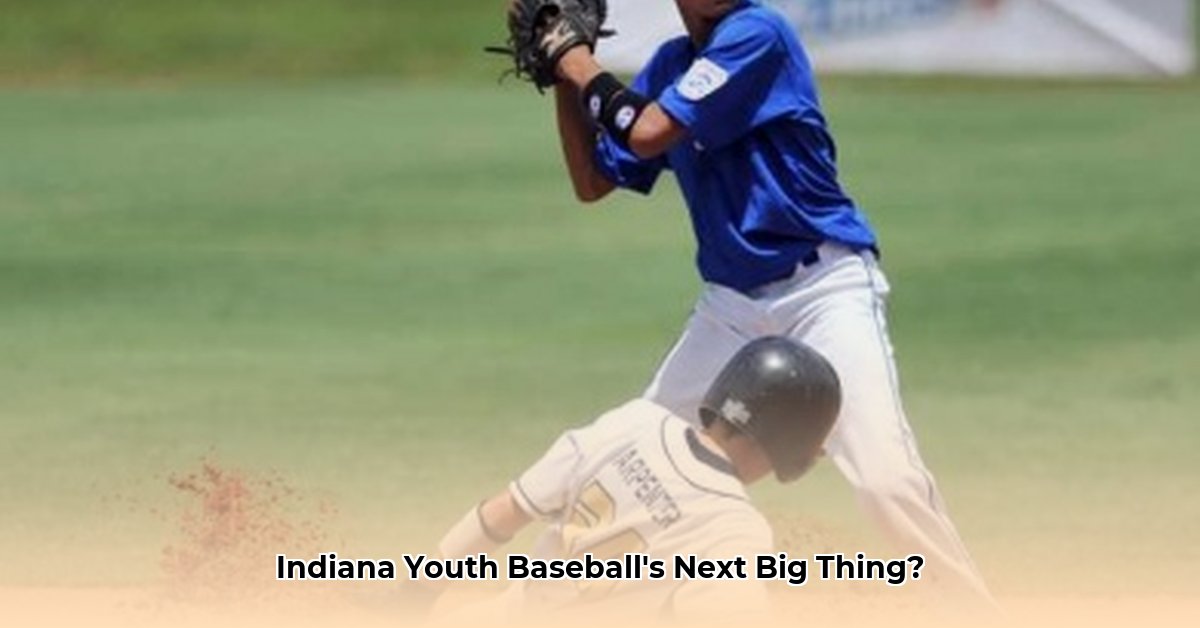
Indiana's youth baseball scene is experiencing explosive growth, and the Mooresville Sports Complex is at the heart of this exciting development. This article analyzes the complex's current standing, identifying strengths, weaknesses, and opportunities within the competitive landscape. We'll provide actionable intelligence and a risk assessment, offering practical strategies for the complex, USSSA Indiana, and youth baseball teams themselves.
The Indiana Youth Baseball Explosion: A Data-Driven Look
The surge in Indiana youth baseball participation is fueled by the structured USSSA tournament system. This multi-tiered system, encompassing AA, AAA, and Major divisions, ensures a challenging yet appropriate competitive environment for all skill levels. This structured approach fosters sustained participation, leading to a significant increase in the number of teams competing annually in statewide tournaments. One key example is the USSSA State Tournament, drawing an impressive 365 teams annually 1. This high demand creates significant opportunities but also presents considerable challenges for venues like the Mooresville Sports Complex. How can they capitalize on this booming interest?
Mooresville Sports Complex: A Home Run, But With Room For Improvement
Mooresville Sports Complex has proactively enhanced its facilities to meet the rising demand. Investments in laser-leveled fields (improving drainage and playability) and new infield mixes (providing smoother surfaces) directly enhance the player experience and attract more tournaments. These improvements are not merely cosmetic; they represent strategic moves to attract teams and increase revenue. But how can these improvements translate to long-term success?
Balancing Success with Challenges: Capacity and Competition
While Mooresville has made significant strides, capacity limitations pose a challenge. Projections for 2025 indicate near-maximum capacity for specific age groups (10U AA, 12U AA, and 14U AA), highlighting a potential bottleneck. This high demand, while positive, simultaneously restricts future growth. Furthermore, intense competition from other complexes, including Canes Midwest, Ceraland, and Indy Sports Park, necessitates strategic planning to maintain a competitive edge. How can the Mooresville Sports Complex manage this burgeoning demand whilst retaining its market share? What are the crucial steps to take?
Playing to Win: Actionable Strategies for Success
To effectively manage growth and sustain competitiveness, a multi-faceted approach is required. The following strategies are tailored for different stakeholders:
For Mooresville Sports Complex:
- Optimize Scheduling (0-1 year): Implement sophisticated scheduling software to maximize field usage and accommodate more teams.
- Enhance Marketing (0-1 year): Invest in targeted digital marketing campaigns. Highlight unique selling propositions (e.g., superior field conditions, convenient amenities).
- Expand Capacity (3-5 years): Explore viable expansion options, such as adding additional fields or upgrading existing infrastructure. Conduct a thorough feasibility study before committing to any major projects.
For USSSA Indiana:
- Monitor Participation Trends (0-1 year): Continuously monitor registration data to anticipate future demand and proactively address capacity concerns.
- Develop Infrastructure Plans (3-5 years): Collaborate with venues to develop a long-term plan to address infrastructure needs across the state. This might involve securing funding or exploring partnerships with public organizations.
- Diversify Tournament Formats (0-1 year): Explore alternative tournament formats to alleviate pressure on existing venues and increase participation opportunities.
For Youth Baseball Teams:
- Register Early (0-1 year): Register for tournaments well in advance to secure your spot, especially during peak seasons.
- Plan for Contingencies (0-1 year): Develop backup plans for inclement weather, including alternative venues or rescheduling options.
- Research Venues (0-1 year): Carefully research venues, weighing factors like field quality, location, and amenities.
Navigating the Risks: A Proactive Approach
Effective risk management is crucial for long-term success. The following risk assessment matrix outlines potential challenges and mitigation strategies:
| Risk Category | Likelihood | Impact | Mitigation Strategy |
|---|---|---|---|
| Weather Delays | High | High | Develop comprehensive rainout policies; secure backup dates or alternative venues; invest in reliable weather forecasting tools. |
| Field Damage | Medium | Medium | Implement proactive maintenance schedules; use durable field surfacing materials; utilize protective field covers. |
| Capacity Constraints | High | Medium | Explore expansion options; prioritize tournament bookings based on a fair system (e.g., lottery); implement a robust waiting list system. |
| Venue Competition | High | Medium | Provide exceptional customer service; offer unique amenities (e.g., on-site concessions, training facilities); use targeted marketing efforts highlighting unique value propositions. |
| Negative Team Reviews | Medium | Medium | Actively solicit feedback from teams; swiftly address any complaints; continuously improve facilities and services based on feedback; utilize online review platforms strategically. |
Key Takeaways and Future Implications
The future of youth baseball in Indiana is bright. Mooresville Sports Complex is well-positioned to capitalize on this growth but must proactively address capacity constraints and competition. A strategic approach encompassing facility enhancements, effective marketing, and strong partnerships is crucial for sustained success. This isn't just about accommodating the current boom; it's about building a sustainable ecosystem for years to come.